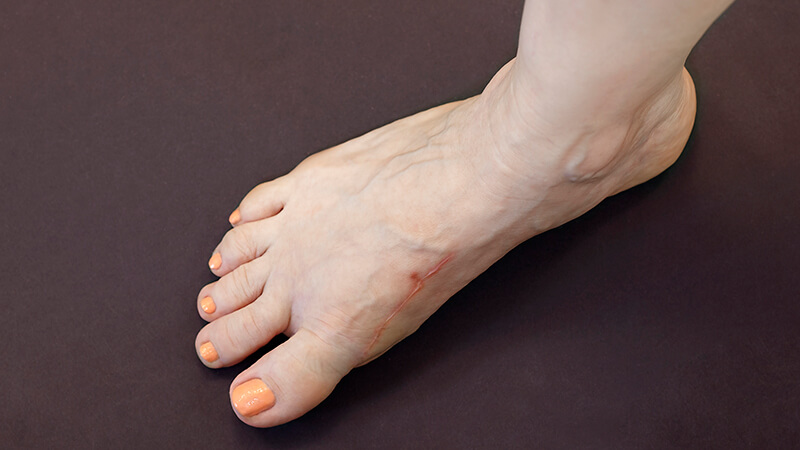
Practice Perfect 720
A Quick Tip: The Power of the First MTP Joint Fusion
A Quick Tip: The Power of the First MTP Joint Fusion


Of all the surgical procedures available to fix a foot, one of the most tried and true is the first metatarsophalangeal joint (MTPJ) arthrodesis. The ample research consistently describes the success of this procedure in reducing symptoms and improving function. But this procedure is not only for end stage arthritis and has been described for large bunion deformities1,2. I have also experienced the 1st MTPJ fusion as an excellent option for patients with bunions and metatarsus adductus.
The radiographs in the images above show the results of a first MTPJ fusion on a patient with painful hallux valgus and hallux rigidus. Note the preoperative 20-degree first intermetatarsal angle (IMA) and the significant normalization of that intermetatarsal angle to 8 degrees with the fusion procedure, representing an approximately 12-degree correction.
Here are a few things to consider.
- No proximal procedure was necessary to first close the (IMA). This is consistent with the research literature that reports an average IM correction of 7-9 degrees with the first MTPJ fusion.1,2 This is a powerful procedure!
- It is important to line up the hallux and the first metatarsal in the transverse plane to achieve this correction. Residual abduction of the hallux will cause a retrograde force that pushes the first metatarsal into an adducted position with less correction.
- The correction itself comes from that same retrograde force of the hallux, coupled with the flexibility of the first tarsometatarsal joint, pushing the first metatarsal back into a proper position, and, incidentally, improving medial arch function.
- Fixation options abound and most are highly successful.
- Early weightbearing is permitted without harmful effects due to the stability of modern-day fixation constructs.3,4 Keep in mind, the short lever arm of the hallux will not create a lot of dorsiflexory force on the fusion site, again supporting early weightbearing.
For some patients, the idea of not being able to move their great toe again is a turn off, but a careful explanation of the benefits plus the ability to continue to do almost all activities after recovery often convinces most patients. Good luck with your next first MTPJ fusion.


-
McKean RM, Bergin PF, Watson G, Mehta SK, Tarquinio TA. Radiographic evaluation of intermetatarsal angle correction following first MTP joint arthrodesis for severe hallux valgus. Foot Ankle Int. 2016 Nov;37(11):1183-1186.
Follow this link -
Dalat F, Cottalorda F, Fessy MH, Besse JL. Does arthrodesis of the first metatarsophalangeal joint correct the intermetatarsal M1M2 angle? Analysis of a continuous series of 208 arthrodeses fixed with plates. Orthop Traumatol Surg Res. 2015 Oct;101(6):709-714.
Follow this link -
Abben KW, Sorensen MD, Waverly BJ. Immediate weightbearing after first metatarsophalangeal joint arthrodesis with screw and locking plate fixation: a short-term review. J Foot Ankle Surg. Jul-Aug 2018;57(4):771-775.
Follow this link -
Crowell A, Van JC, Meyr AJ. Early Weight-Bearing After Arthrodesis of the First Metatarsal-Phalangeal Joint: A Systematic Review of the Incidence of Non-Union. J Foot Ankle Surg. Nov-Dec 2018;57(6):1200-1203.
Follow this link




























Comments
There are 0 comments for this article